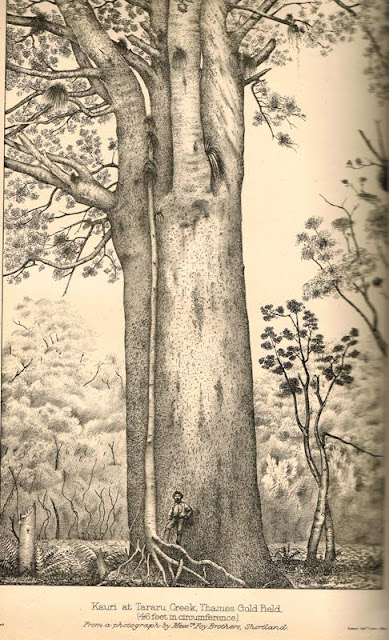 |
A posed
photograph of Australian, British, New Zealand and Indian camel troops https://en.wikipedia.org/wiki/Imperial_Camel_Corps
|
They lie, their bodies now at rest.
They came from far, —the sea-girt isles.
The crowded mart, the hills wind-swept,
But now they sleep in hallowed ground
O’erlooking where, of yore, the Master slept.
Their bodies, worn by toils of war, —
The midnight march, the dawn’s swift, fierce
attack,Or scorched by desert’s sun, or chilled by rain,
By fiery bullet scarred, or naked, sword, —
Repose in dust, their souls, set free,
Are called to higher service by their Lord.
Today -
31 October 2017 marks 100 years since the Battle of Beer Sheba -
vital to and the beginning of the Sinai Palestine Campaign. Yet is
one of the least known campaigns of World War One. The campaign involved
troopers from Australia and New Zealand and those of both the Camel
Corps and Mounted Rifles.
The Imperial Camel Corps Brigade (ICCB) was raised
by the British Empire in December 1916 during the First World War for service
in the Middle East. The unit eventually grew to a brigade of four battalions,
one battalion each from Great Britain and New Zealand and two battalions from
Australia. Support troops included a mountain artillery battery, a machine gun
squadron, Royal Engineers, a field ambulance, and an administrative train. At
its height there were 4,150 men and 4,800 camels. 3 of the 4 battalions
were disbanded in were disbanded in mid-1918. The 2nd Battalion was disbanded
in May 1919.
 |
Horses being embarked at Wellington courtesy http://nzetc.victoria.ac.nz/tm/scholarly/tei-WH1-Effo-t1-body-d9-d4.html
|
Reakes wrote on New Zealand horses endurance:-
Major J. Stafford;
Major P. M. Edgar;
Major C. R. Neale;
Captains-
R. H. Meade,
W. C. Ring,
E. L. Siddall,
C. S. Simpson,
A. Taylor,
W. C. Barry,
W. P. Begg,
F. Crossley,
E. E. Elphick,
A. A. Johnson,
T. G. Lillico,
D. H. Rait,
W. G. Taylor,
J. Danskin,
D. H. McHattie,
J. H. Primer,
and G. N. Waugh.
"When the big Palestine push came in February,
1917, the New Zealand horses' endurance was severely tested. The pace left the
camel transport far behind. At one stage the horses had to go 72 hours without
water, and their sole allowance of food was 12 lbs. of barley each per day, and
each had to carry a three- days' ration. This restriction to barley, with a
shortage of water, brought on diarrhoea, and horses began to die. At this time
the Brigade was at Jaffa. Fortunately some stacks of barley straw were found,
the Quarter-Master General supplied petrol for a chaff cutter, and soon the
horses had barley chaff, which helped to check the trouble. " (Reakes, 1923, p157)
Horses
and Camels were an integral part of this campaign. The New Zealand Veterinary
Corps played a very relevant role in this in the transport and care of the
animals. The active service personnel of the veterinary corps comprised the
following twenty-four officers:—
Lieut.-Colonel
A. R. Young. A.D.V.S.;
Lieut.-Colonel
H. A. Reid;Major J. Stafford;
Major P. M. Edgar;
Major C. R. Neale;
Captains-
T.
A. Blake,
E. C.
Howard, R. H. Meade,
W. C. Ring,
E. L. Siddall,
C. S. Simpson,
A. Taylor,
W. C. Barry,
W. P. Begg,
F. Crossley,
E. E. Elphick,
A. A. Johnson,
T. G. Lillico,
D. H. Rait,
W. G. Taylor,
J. Danskin,
D. H. McHattie,
J. H. Primer,
and G. N. Waugh.
W.C Ring was William Charles Ring - grandson of
Charles Ring originally from Coromandel and whose father also William Charles
Ring was from Hinuera. ( see Ring - three generations in Auckland Province)
TCDC
(Thames Coromandel District Council) has designated one of the Memorial Forests
on the Coromandel Peninsula – for those who died in Sinai Palestine – to be
near Tangitaroria Lane, Pauanui. Trees have been planted for those New
Zealanders who died in WW1 in the eight Memorial Forests on the Coromandel
Peninsula organised by TCDC ( Thames Coromandel District Council) including the
Memorial Forest near Pauanui.
 |
| Tairua Valley Hills Coromandel Peninsula – Photo Courtesy Chris Ball 2015 |
Several of the Troopers in the Sinai Palestine
Campaign had family links to the Tairua Valley.
Reference Source:
• Reakes, C
J. 1923. The War Effort of New Zealand. Auckland: Whitcombe and Tombs Limited
Chapter IX The New Zealand Veterinary Corp
http://nzetc.victoria.ac.nz/tm/scholarly/tei-WH1-Effo-t1-body-d9-d4.html
- Moore, A. Briscoe. n.d. The Mounted Riflemen in Sinai and Palesne: The Story of New Zealand’s Crusaders. Auckland: Whitcombe and Tombs Limited. http://nzetc.victoria.ac.nz/tm/scholarly/tei-WH1MRif-t1-body-d1.html
- Auckland War Memorial Museum Cenotaph Database http://www.aucklandmuseum.com/war-memorial/online-cenotaph
• Wikipedia
https://en.wikipedia.org/wiki/Battle_of_Beersheba_(1917)
https://en.wikipedia.org/wiki/Imperial_Camel_Corps
• TCDC (
Thames Coromandel District Council)
https://www.tcdc.govt.nz/Your-Council/Council-Projects/Current-Projects/WWI-Memorial-Forest-Project/













